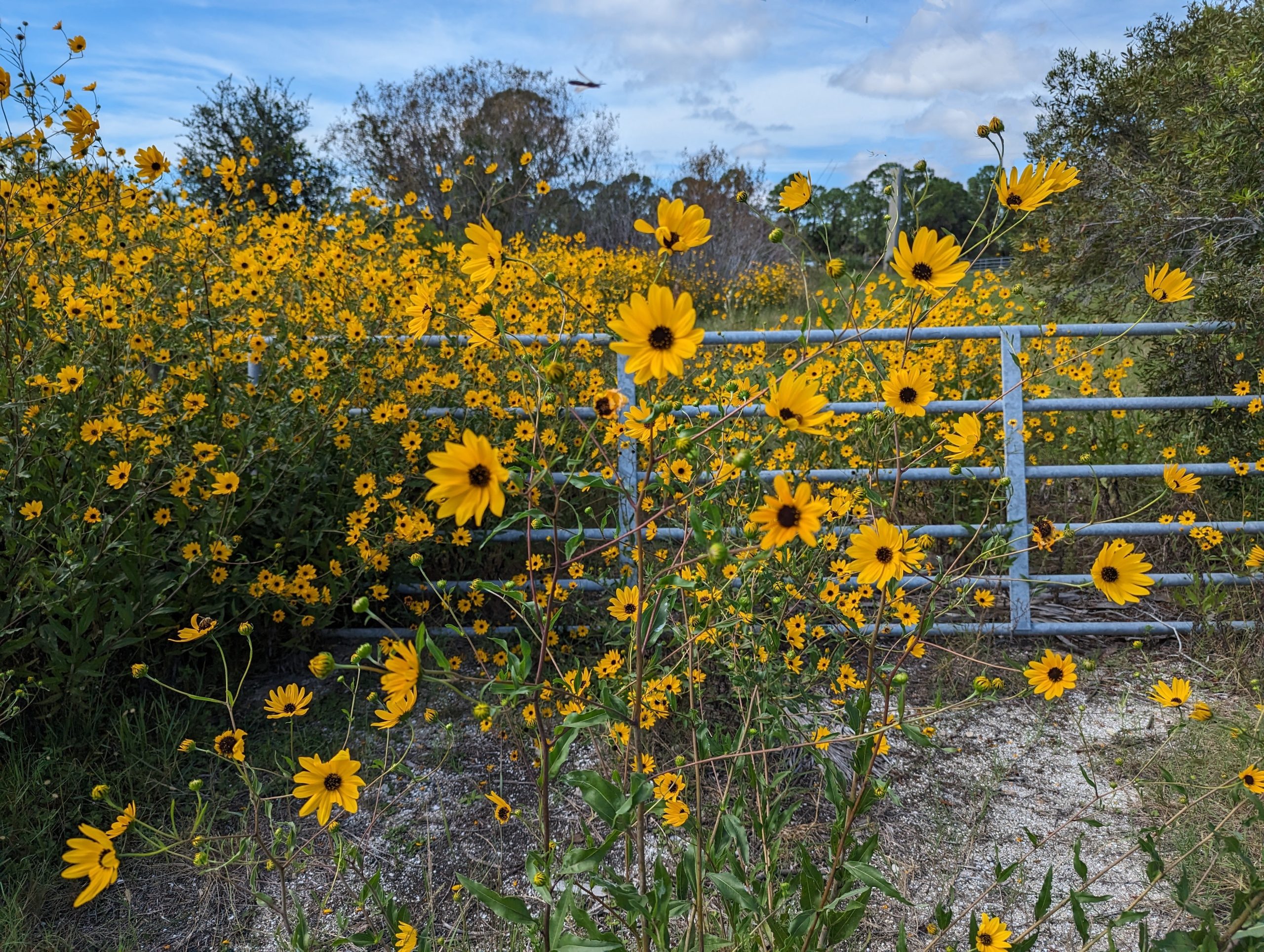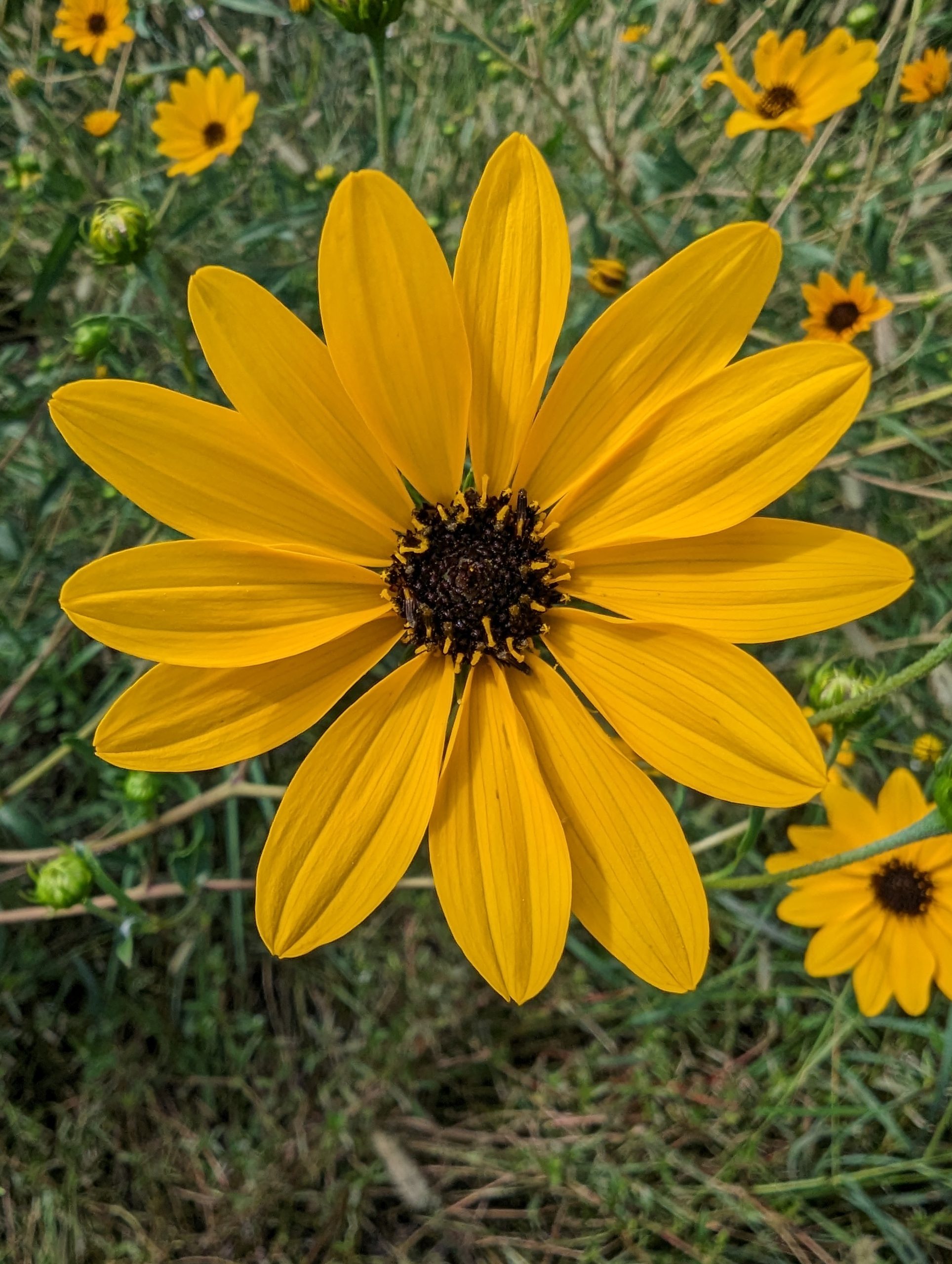Florida’s Fall Festivity
When October arrives in Florida, it may not bring the same fiery tree foliage that northern states boast, but the Sunshine State has its own unique way of celebrating fall. One of the standout performers of this season is Helianthus angustifolius, commonly known as the swamp sunflower or narrowleaf sunflower. This vibrant native plant paints natural areas in shades of golden orange and provides an incredible burst of color along the roadways.

Swamp Sunflower’s Stunning October Bloom
H. angustifolius is native to the southeastern United States, and in Florida, it has become a fall staple. As the days grow shorter and the temperatures begin to drop slightly, these charming sunflowers burst into bloom. Their golden-yellow petals stretch towards the sun, creating a stunning fall display that is hard to miss. One of the features of the Swamp Sunflower is it thrives in wetlands, along riverbanks, and in low-lying areas, which are common in Florida.
As Halloween approaches, the vivid yellow blooms of H. angustifolius create a striking contrast against the browning foliage of other plants. This natural pop of color is reminiscent of the vibrant orange and yellow hues that adorn homes, front yards, and stores during the Halloween season. Swamp Sunflowers add a touch of festive spirit to Florida’s landscapes.
The Benefits of Swamp Sunflowers for Pollinators and Wildlife

The beauty of H. angustifolius doesn’t end with its vibrant October display. These sunflowers also provide valuable ecological benefits, particularly for pollinators and wildlife. Bees, butterflies, and other pollinators are drawn to the bright blossoms, which offer a rich source of pollen.
In addition to supporting pollinators, swamp sunflowers play a crucial role in providing food and shelter for wildlife. Birds, in particular, are known to feast on the seeds of these sunflowers. The seeds are rich in nutrients, making them a valuable food source for many bird species during the fall and winter months.

Gardening enthusiasts and environmentally conscious homeowners in Florida can consider incorporating H. angustifolius into their landscapes. While it naturally thrives in wet areas, it can also be planted in rain gardens, bioswales, along the edge of ponds, or in any area that may become temporarily waterlogged. Its brilliant blooms and wildlife-friendly features make it an excellent addition to home gardens and community landscapes.
Conclusion
As the autumn season unfolds in Florida, Helianthus angustifolius, or Swamp Sunflower, stands as a radiant symbol of fall’s arrival. Its bright yellow blooms add an unexpected touch of fall and Halloween color to the state’s landscapes. Furthermore, its role in supporting pollinators and providing nourishment for wildlife underscores its ecological significance. Whether you admire them from your car as you drive down the road or plant them in your own garden, these sunflowers are a reminder that nature always finds its way to celebrate the changing seasons, even in the state that feels like it is in eternal summer.
RESOURCES
- Florida Plant Atlas: https://florida.plantatlas.usf.edu/Plant.aspx?id=3497
- Florida Association of Native Nurseries: https://www.fann.org/plants/detail/helianthus-angustifolius
- Florida Native Plant Society: https://www.fnps.org//
- Florida Wildflower Foundation: https://www.flawildflowers.org/flower-friday-helianthus-angustifolius/
- IFAS Gardening Solutions: https://gardeningsolutions.ifas.ufl.edu/plants/ornamentals/swamp-sunflower.html#:~:text=Swamp%20sunflower%20(Helianthus%20angustifolius)%20is,as%20soon%20as%20temperatures%20climb.
During the preparation of this work, the author used ChatGPT to help build the blog post. After using this tool/service, the author reviewed and edited the content, and takes full responsibility for the content of the publication.
 12
12
